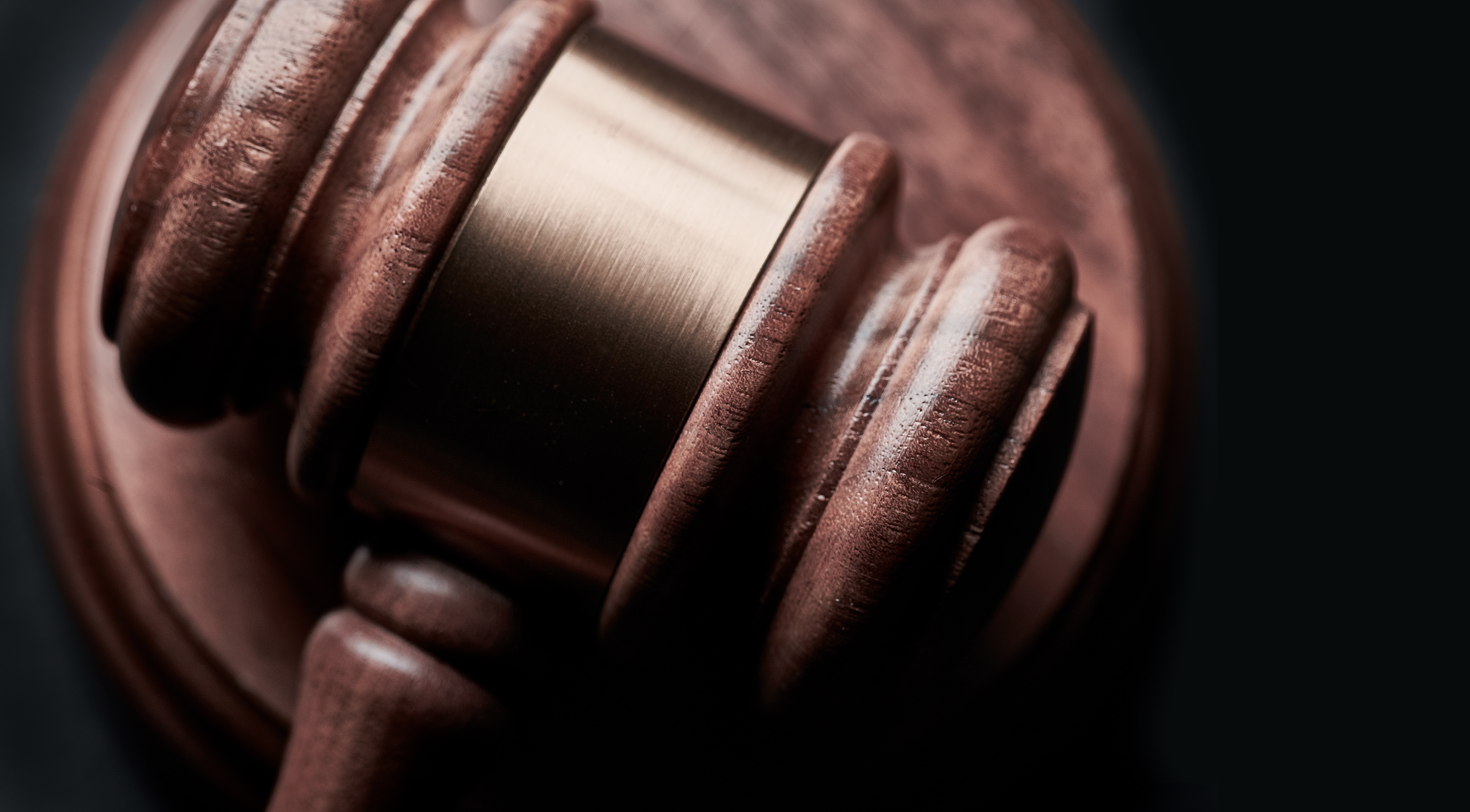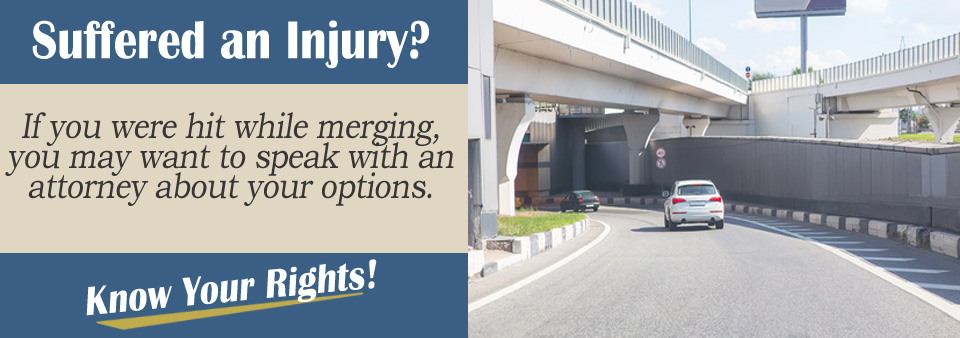In merging accidents, in most cases the driver who was merging at the time is usually at fault. There are some instances though where the merging driver is not at fault.
For example, if the merging driver hit a car going over the speed limit, the speeding car could be labeled at fault. The reason being that the speeding driver could be labeled at fault because they made it difficult for the merging car to determine the time needed to merge.
With that being said though, the merging driver in most car accidents while merging is usually at fault.
If you are involved in an accident on a highway and are badly injured you will want to ensure you can claim compensation if you were not to blame. Auto accidents can be quite complex and are rarely straightforward, so make sure you get help from a personal injury attorney before making a claim.
Auto Accident Injuries That Happen On Merging
Accidents frequently happen when vehicles merge from a ramp onto a highway or freeway. They are most likely to happen when the highway is moving fast but lanes are busy and there are also many vehicles trying to merge.
A collision between a vehicle doing 80 mph and a merging vehicle is likely to be very serious for both vehicles. The crash scenario might even be worse if the highway is particularly congested.
All it takes is a domino effect. The first vehicle to smash into the merging vehicle blocks a lane or even gets pushed into an outside lane, causing more vehicles to crash into it.
The injuries are likely to be serious unless the actual collision happens in a busy city area where the vehicles are moving slowly.
Lane Change and Merging Accidents
One of the most common reasons for merging accidents is because of unsafe lane changes. When you are changing lanes, you always need to make sure there is a clear path in the traffic for you to safely move your car and change lanes.
Unfortunately, that doesn’t always happen. In lane change and merging accidents. Liability in lane change and merging accidents usually lie with the driver who is changing lanes, not the driver who is hit by the merging driver.
In order to prove you were not at fault for the merging accident, you need to be able to show that the other driver was negligent at fault for the accident.
Some of the most common acts of negligence in merging accidents include:
- Failing to wait until the lane is clear
- Not using turn signal to show the intent of switching lanes
- Not checking mirrors
- Merging on top of the other driver
- Causing a sideswipe accident
- Not leaving distance between the two vehicles
If you were involved in a merging accident, you need to be able to prove that the other driver was at fault and was negligent when changing lanes.
The other driver has a duty to perform the lane change in safe manner, meaning there was a clear path to do so.
If the other driver changed lanes, merged and hit you without warning and in an abrupt manner, you could be eligible for a personal injury claim against the other driver.
In certain cases, both drivers could be at fault if both were merging at the same time and hit one another.
If neither driver had the opportunity to change lanes and merge safely, then both drivers could be considered at fault.
Depending on the state you were in, if the lane change accident occurred in a state with comparative negligence laws, both drivers in that same accident could share fault and still could both compensation for their respective damages.
Merging Accidents: Common Reasons and Damages
There are many reasons for merging accidents to occur, and unfortunately, these types of accidents happen frequently, so it's important to know the cause and the potential damages that come along with it.
Some of the most common causes of merging accidents include:
- Merging onto the highway either too slowly or too fast
- Changing lanes without using a turn signal
- Cutting off others
- Crossing over multiple lanes
A few merging accident injuries include:
- Whiplash
- Cuts and bruises
- Broken bones
- Knee injuries
- Neck injuries
- Brain injuries
- Spinal cord injury
What to Do After Someone Hits You While Merging
Driving on busy roads and highways are dangerous enough if you just stay in one lane, but when vehicles are engaged in merging into busy, fast moving lanes then accidents can happen.
If you have been hit by a merging vehicle and you know it wasn’t your fault there is a procedure you need to follow after the accident has happened.
One of the most important things to do first is to call the police even if you and anyone else who has been involved was lucky enough to have escaped being injured. One of the keys to ensuring the damage is paid by the insurer is to present a police report of the accident.
You should provide the police with an accurate detailed account of what happened which they can add to their observations.. After you have called the police you should exchange contact details with the other driver.
If there are any witnesses you should get their contact details and check to make sure that they will corroborate what happened if asked to do so.

In addition, you should take photos of the accident scene and draw a diagram of the position of the two vehicles when the accident happened.
Of course, if you have been injured and an ambulance has been called you may not be able to get all the evidence. In this situation you will have to depend on the police report. You can contact a personal injury attorney to help you through the PI compensation process.
Damages Likely to Your Car in a Merging Accident
The damage done in a merging accident will depend on the speed of both cars at the time. A car that is merging into traffic at high speed and misjudges merging and hits another car could total the car completely and cause serious injuries to the driver and its passengers.
A car moving slowly isn’t so likely to cause serious damage but if it side swipes when merging car doors could be ripped off, side windows, the windshield could be shattered and serious damage to the tires could occur.
Who’s at Fault in a Merging Accident?
Under normal circumstances, the merging vehicle is at fault as a driver is legally obliged to yield the right of way when merging.
There would be few exceptions to this. Determining who is at fault while merging also depends on the scenario at hand. One driver could be at fault if they were aggressive, distracted, or not paying attention.
Fault is determined by state law in the US, so state laws can come into play and that might be somewhat different from one place to another.
One scenario that may leave you wondering who is at fault in a merging accident is lane changing. The driver who is entering a lane of moving traffic and hits another car is always at fault in this scenario.
If you are traveling forward in your lane and another car enters that lane and hits your car, you won't be at fault.

Another possible scenario in which the merging driver may claim not to be fully to blame for the collision is if the vehicle that was on the nearside lane of the highway was speeding or being driven erratically.
This would be quite hard to prove unless there was an automatic camera recording the traffic movements at that particular location and was able to determine the speed of the vehicle actually on the highway.
Another possible scenario is if the vehicle on the highway actually crossed over from the nearside lane into the path of the vehicle that was attempting to make a merging maneuver, in other words if the collision took place before the merging vehicle actually entered the highway.
Whatever the actual circumstances of the crash, if the drivers or passengers later on decide to file a personal injury claim, the evidence for who was actually at fault will be crucial.
If the accident allows you to:
- Get out and take photos
- Ask any witnesses present whether they would be prepared make a statement
- Collect the contact information of all witnesses
- If the police come, obtain a copy of the police report
Work with a Personal Injury Attorney
One of the best assets in any personal injury claim is the PI attorney. An attorney has the experience to negotiate a damages settlement on your behalf with the at-fault driver’s insurer.

They can help put all the relevant evidence together about the merging accident that favors you so that the insurer has no choice but to reach a fair settlement.
No PI attorney will file a PI compensation claim unless there is a high chance of winning a favorable settlement. You will be told well in advance the value of the settlement once it has been finalized and you will be told the date you are likely to be in receipt of the compensation.
Your PI attorney is likely to keep you fully informal throughout the claim’s process. It is unlikely that you will be asked to pay any legal fees until a final settlement has been reached.
If you enlist the help of a personal injury attorney, he or she can help you gather evidence to back up your claim that the merging driver was negligent and at fault for the lane change accident.
Evidence is the key to any personal injury claim, they can help talk to witnesses, can help with assessing the damages to your vehicle and help build your case against the other driver.
If the other driver was found negligent or wants to settle out of court beforehand, your lawyer can help negotiate a fair settlement with the other party. If you receive a settlement in a personal injury case, you could receive damages for the following:
- Medical expenses – past and future
- Lost wages – past and future
- Pain and suffering
- Property damages
- Loss of enjoyment of life
- Loss of consortium
- Mental anguish
Depending on where the accident accorded, there are strict statute of limitations for auto accidents related to lane change and merging accidents.
You should look up the state statue of limitation laws for personal injury claims before filing. The sooner you file, the better as the longer you wait, you risk the statute of limitations closing.
Taking Charge of Your Case
If you have been injured by a merging vehicle and are confident that you were not to blame in any way, you may have a good chance of recovering any damages if you file a personal injury claim with the help of an experienced personal injury attorney.

